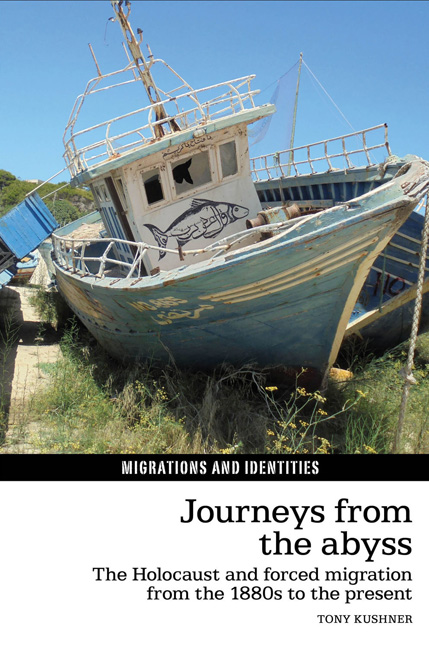Book contents
- Frontmatter
- Dedication
- Contents
- Preface and Acknowledgments
- Introduction: Migration and the Holocaust
- Part 1 Gender, Forced Migration, and Testimony: From ‘White Slavery’ to ‘Trafficking’ via Refugee Domestic Servants
- Chapter 1 From the 1880s to 1945
- Chapter 2 1945 to the Present
- Part 2 Place, Performance, and Legality: Holocaust Survivors and Other Migrant Journeys in the Long Twentieth Century
- Conclusion
- Bibliography
- Index
Chapter 2 - 1945 to the Present
from Part 1 - Gender, Forced Migration, and Testimony: From ‘White Slavery’ to ‘Trafficking’ via Refugee Domestic Servants
- Frontmatter
- Dedication
- Contents
- Preface and Acknowledgments
- Introduction: Migration and the Holocaust
- Part 1 Gender, Forced Migration, and Testimony: From ‘White Slavery’ to ‘Trafficking’ via Refugee Domestic Servants
- Chapter 1 From the 1880s to 1945
- Chapter 2 1945 to the Present
- Part 2 Place, Performance, and Legality: Holocaust Survivors and Other Migrant Journeys in the Long Twentieth Century
- Conclusion
- Bibliography
- Index
Summary
Memory and Representation of Refugee Domestics, 1945 to the 1960s
Faced with thousands of unemployed refugee domestics at the start of the war, and requiring female labour for the war economy, the Home Office relaxed the work restrictions that had been an absolute condition of entry. While the government and the refugee organisations had always assumed that these women would not remain in service long-term, the conflict precipitated their exit. Even so, many remained in service throughout the war – perhaps a larger percentage than their British equivalents. After 1945 a small number of Holocaust survivors joined their ranks. Entry through the Home Office's Distressed Relatives scheme was highly restrictive, but, informally, some women turned down were given a second chance of entry by being granted Ministry of Labour foreign domestic permits.
Ironically, while such procedures had deliberately eased the entry of Jewish female refugees in the late 1930s, they were in danger now of discriminating against them. At a point when schemes to recruit alien workers were rapidly expanding, the government was wary of letting too many Jews into Britain. A sympathetic official noted in July 1946 that excluding Jewish ‘near relatives whilst admitting other foreigners’ could be subject to public disapproval as being ‘unfair’. This was the route into Britain for Elizabeth Weisz, sister of the famous Hungarian Jewish refugee cartoonist ‘Vicky’. His biographers sardonically note that ‘She entered – such were the requirements of a concentration camp victim – on a “Domestic Service Permit” which allowed her to be somebody's maid.’
Yet, if domestic service was becoming a minority rather than the dominant occupation of Jewish refugees by the early years of the Second World War, its memory and representation had a longer life. In fact, fictional portrayals of refugee servants went back further, starting with Ruth Feiner's Fires in May (1935). One of the most remarkable features of the refugees from the 1930s was their almost instant articulacy in a foreign culture – whether in film, art, or literature. Feiner was a young Jewish refugee from a distinguished German artistic family and this was already her second book. The title page of Fires in May stated that ‘the distance from the Continent to England is greater by thousands of miles than the distance from one end of the world to the other’.
- Type
- Chapter
- Information
- Journeys from the AbyssThe Holocaust and Forced Migration from the 1880s to the Present, pp. 96 - 154Publisher: Liverpool University PressPrint publication year: 2017



